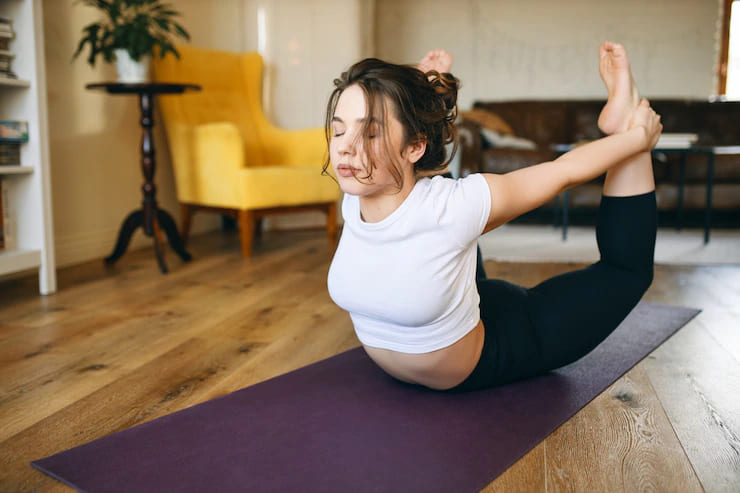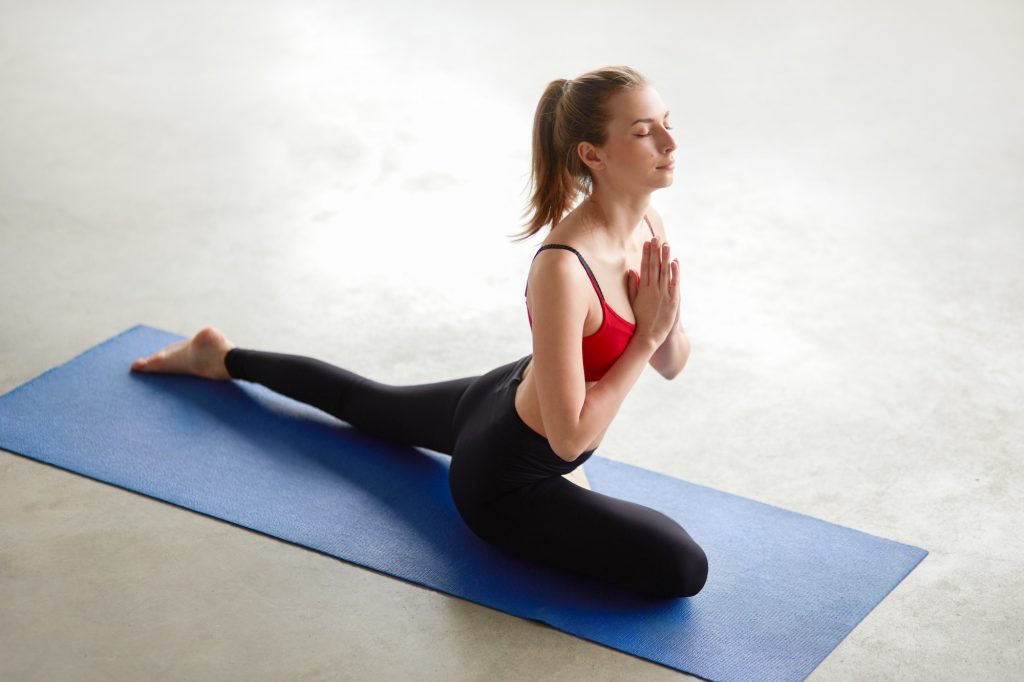In today’s modern society, it’s simpler than ever to spend hours hunched over a phone or slumped over a laptop. Long periods spent staring at a screen, especially if you’re not correctly positioned, can be taxing on your muscles, joints, and ligaments. Many people are aware of poor posture in others but are unaware of how their own falls short. If you look around the office, you’ll notice that most co-workers are bent over at their desks.
When your body becomes accustomed to being leaned over for hours on end, it’s easy to maintain that posture even when you’re not in front of a screen. Some simple workouts and tactics can help you break your slouching behavior.

WHAT IS GOOD POSTURE?
Good posture is sometimes referred to as a neutral spine. When we have proper posture, the muscles that surround the spine are balanced and equally support the body.
Here’s a brief check-in on your posture: When sitting, your feet should be flat on the floor, and your weight should be evenly distributed over both hips. The majority of your back should be straight (with natural curvature in the lumbar, thoracic, and cervical sections). Your shoulders should be relaxed but your back and your ears should be aligned with your collarbones.
IMPORTANCE OF GOOD POSTURE
Good posture is essential for general health and provides numerous benefits such as reduced back discomfort, increased energy, and higher confidence. Good posture is necessary since it can help you avoid muscle strain, soreness, exhaustion, and various other common disorders and medical conditions. It’s never too late to fix or improve your posture, especially if it’s causing one or more health issues.
- Reduce Back Pain :- Long periods of slouching can impose undue strain on the spine’s discs, ligaments, and muscles, resulting in low back pain.
- Fewer Headaches :- Tension headaches are the most common type of headache and are distinguished by feelings of pressure, tightness, and dull, throbbing pain around the brow, neck, and back of the head.
- High Lung Capacity :- Good posture can frequently increase lung capacity, making breathing easier. Walking, jogging, and swimming may also become easier as a result of enhanced breathing and excellent posture.

- High Energy Levels :- Because it impedes blood circulation and puts bones and joints out of position, bad posture can make you feel exhausted and less energetic.
- Less tension in the shoulder and neck :- The joints and ligaments are less strained and less prone to chronic overuse when they are properly aligned.
- Reduced chance of abnormal wearing :- Your joints naturally deteriorate over time. There aren’t many issues if your posture is even. However, if you’re uneven, you’ll have more discomfort and problems.
- Reduced TMJ (temporomandibular joint) pain :- Our mandibular joint and jaw muscles are stressed and tense when we have a forward head position. This can cause pain during eating, talking, or yawning, as well as clicking and headaches.
- Appear Taller :- When people have good posture, they appear taller and leaner. It can sometimes even make our abs appear more defined.
WAYS TO MAINTAIN GOOD POSTURE
With proper posture, you can have less back, neck, and shoulder pain, less stress, more energy, less fatigue, better mood, better breathing, and more confidence, as well as more positive body language. Many people are perplexed as to what poor posture entails. Is it a bodily ailment? Is it merely slouching, or is it a genetic trait? Consider how much harm is done by sitting slumped over a computer or your phone.

Specialists at Zenith recommend the following posture-improvement strategies :
- Education and training in posture.
- Soft tissue massage and manual therapy.
- Mobilization in collaboration.
- Advice on ergonomic workplace conditions.
- Exercises to increase flexibility and strength.
- Strapping to assist in maintaining good posture.
In addition to working with a Physiotherapist, it is always a good idea to practice exercises on your own time to combat the effects of poor posture on your daily life. It’s as simple as avoiding being in one position for an extended period to begin breaking the habits that cause poor posture.
- Child’s Pose :- This stretching and lengthening pose stretches and lengthens your spine, glutes, and hamstrings. The child’s position relieves tension in the lower back and neck.
- Forward Fold :- This standing stretch relaxes the spine, hamstrings, and glutes. It stretches your hips and legs as well. You should feel the entire back half of your body opening up and lengthening as you perform this stretch.
- Cat-Cow :- Cat cow stretches and rubs your spine. It also promotes blood circulation while relieving tension in your torso, shoulders, and neck.
- Standing Cat-Cow :- Standing cat-cow stretch helps to relax tension in your back, hips, and glutes.
- Chest Opener :- This workout opens and stretches your chest. This is especially effective if you spend the majority of your day sitting, which causes your chest to slide inward. Standing up straighter is made easier by strengthening your chest.
- High Plank :- The high plank stance strengthens your shoulders, glutes, and hamstrings while relieving pain and stiffness throughout your body. It also aids in the development of core and back strength, both of which are essential for proper posture.
- Downward Facing Dog :- This is a forward bend that can be performed as a resting pose to help your body balance. The downward-facing dog stance relieves back discomfort while also strengthening and aligning the muscles in your back. Regular practice helps to improve posture.
- Pigeon Pose :- This hip opener also stretches your spine, hamstrings, and glutes. The pigeon stance can also benefit your sciatic nerve and quadriceps. Opening and stretching these areas of your body makes it easier to repair posture issues.
- Glute Squeeze :- This exercise strengthens and activates your glutes while also alleviating lower back pain. It also improves hip and pelvic function and alignment, resulting in better posture.
- Isometric Rows :- This exercise relieves pain and stiffness caused by sitting in one position for too long. Isometric pulls strengthen your shoulder, arm, and back muscles, allowing you to maintain proper posture.
While the above exercises are recommended for most people, it goes without saying that they are only appropriate for some. As a result, we recommend consulting with your physiotherapist to see whether these are the right workouts for you. If you are unclear or believe these are causing you more discomfort, stop and consult with a specialist.
OUTLOOK
One of the simplest and easiest ways to keep your spine healthy is to maintain good posture. While it may require some practice and mindfulness, maintaining proper posture will give enough back support. This is especially crucial if you spend most of your day sitting in an office chair or standing.
